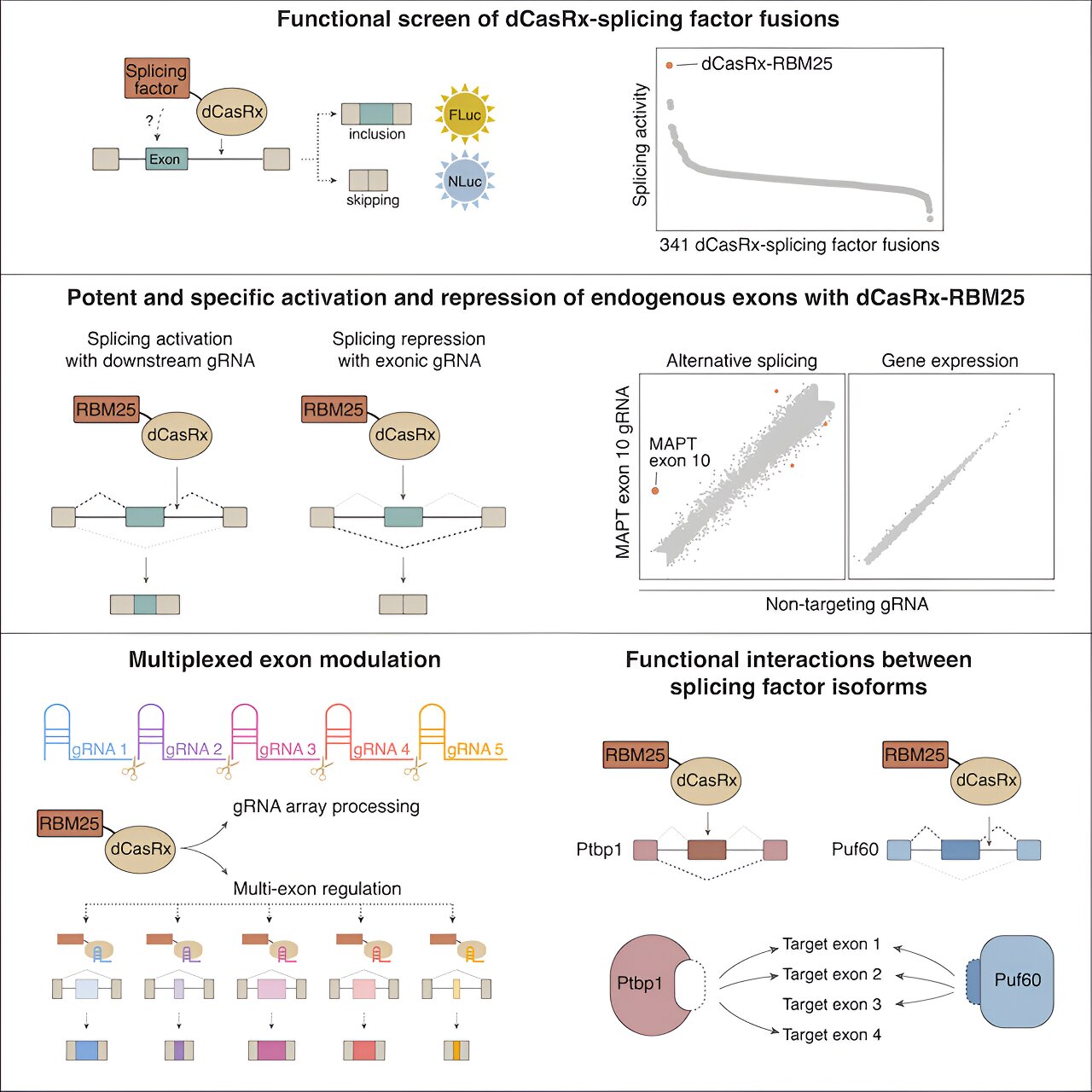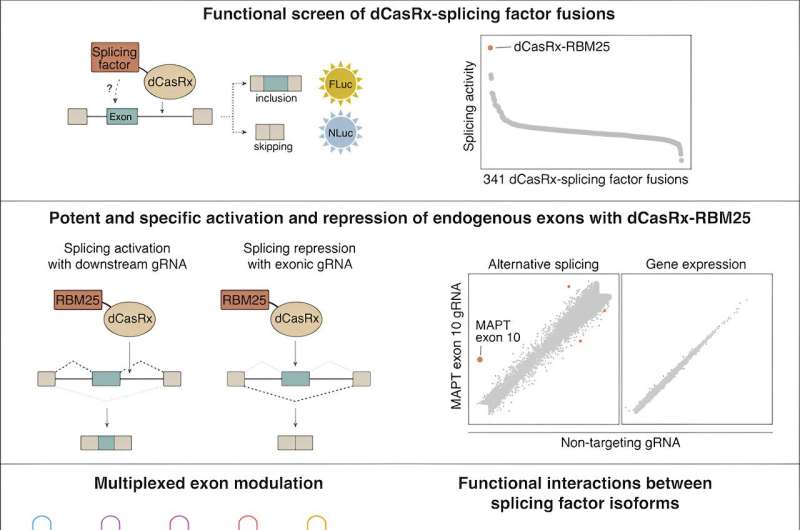

Researchers at the University of Toronto have harnessed a bacterial immune defense system, known as CRISPR, to efficiently and precisely control the process of RNA splicing. The technology opens the door to new applications, including systematically interrogating the functions of parts of genes and correcting splicing deficiencies that underlie numerous diseases and disorders.
The research is published in the journal Molecular Cell.
“Almost all human genes produce RNA transcripts that undergo the process of splicing, whereby coding segments, called exons, are joined together and non-coding segments, called introns, are removed and typically degraded,” said Jack Daiyang Li, first author on the study and Ph.D. student of molecular genetics, working in the labs of Benjamin Blencowe and Mikko Taipale at U of T’s Donnelly Centre for Cellular and Biomolecular Research.
Exons can be alternatively spliced such that the regulation and function of the approximately 20,000 human genes that encode proteins are greatly diversified, allowing the development and functional specialization of different types of cells.
However, it is unclear what most exons or introns do, and the misregulation of normal alternative splicing patterns is a frequent cause or contributing factor to various diseases, such as cancers and brain disorders. However, existing methods that allow for the precise and efficient manipulation of splicing have been lacking.
In the new research study, a catalytically-deactivated version of an RNA targeting CRISPR protein, referred to as dCasRx, was joined to more than 300 splicing factors to discover a fusion protein, dCasRx-RBM25. This protein is capable of activating or repressing alternative exons in an efficient and targeted manner.
“Our new effector protein activated alternative splicing of around 90 percent of tested target exons,” said Li. “Importantly, it is capable of simultaneously activating and repressing different exons to examine their combined functions.”
This multi-level manipulation will facilitate the experimental testing of functional interactions between alternatively spliced variants from genes to determine their combined roles in critical developmental and disease processes.
“Our new tool makes possible a broad range of applications, from studying gene function and regulation, to potentially correcting splicing defects in human disorders and diseases,” said Blencowe, principal investigator on the study, Canada Research Chair in RNA Biology and Genomics, Banbury Chair in Medical Research and professor of molecular genetics at the Donnelly Centre and the Temerty Faculty of Medicine.
“We have developed a versatile engineered splicing factor that outperforms other available tools in the targeted control of alternative exons,” said Taipale, also principal investigator on the study, Canada Research Chair in Functional Proteomics and Proteostasis, Anne and Max Tanenbaum Chair in Molecular Medicine and associate professor of molecular genetics at the Donnelly Centre and Temerty Medicine.
“It is also important to note that target exons are perturbed with remarkably high specificity by this splicing factor, which alleviates concerns about possible off-target effects.”
The researchers now have a tool in hand to systematically screen alternative exons to determine their roles in cell survival, cell type specification and gene expression.
When it comes to the clinic, the splicing tool has the potential to be used to treat numerous human disorders and diseases, such as autism and cancers, in which splicing is often disrupted.
More information:
Jack Daiyang Li et al, Efficient, specific, and combinatorial control of endogenous exon splicing with dCasRx-RBM25, Molecular Cell (2024). DOI: 10.1016/j.molcel.2024.05.028
Provided by
University of Toronto
Citation:
Researchers develop RNA-targeting technology for precisely manipulating parts of human genes (2024, June 24)
retrieved 24 June 2024
from https://phys.org/news/2024-06-rna-technology-precisely-human-genes.html
This document is subject to copyright. Apart from any fair dealing for the purpose of private study or research, no
part may be reproduced without the written permission. The content is provided for information purposes only.